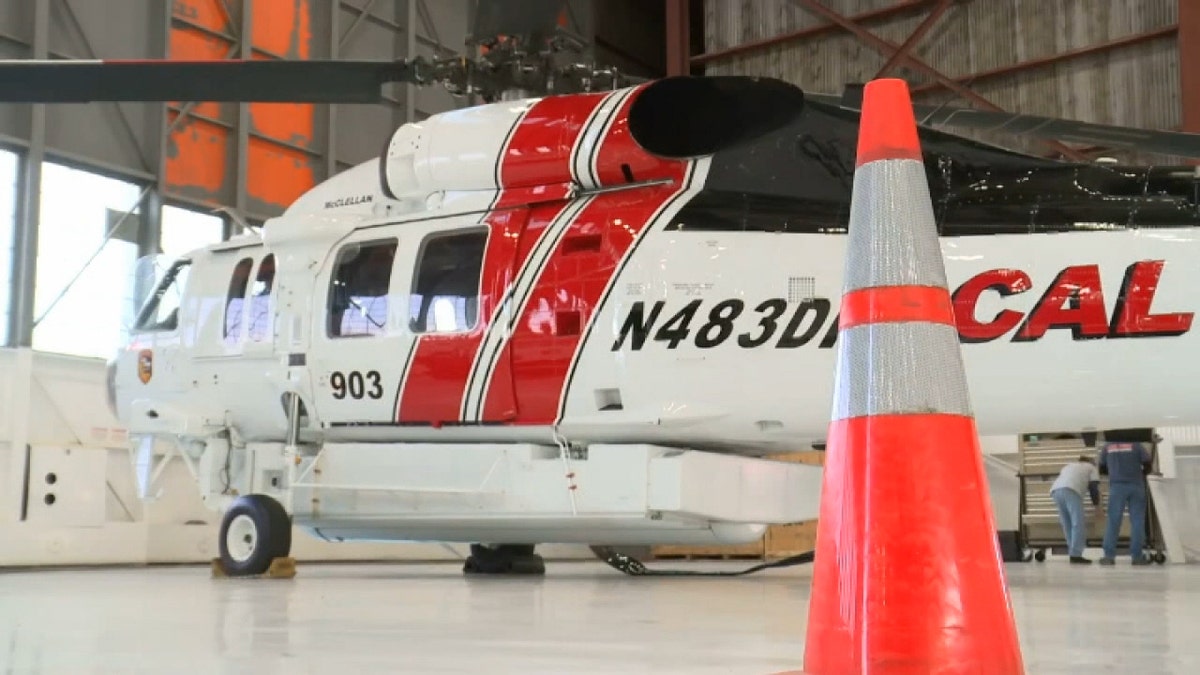Cal Fire calls new fleet of high-tech helicopters an 'absolute game-changer'
Fleet of 12 brand new S-70i Firehawks give firefighters 24 hours of coverage from the sky and have more space for crews and a larger tank for water storage.
Firefighters in California are about to have a new tool that can battle wildfires from the sky around the clock.
The state's fire agency, Cal Fire, is taking delivery of its fleet of 12 brand new S-70i Firehawk helicopters that will allow pilots to drop water over fires at night for the first time.
“This is a game-changer,” Cal Fire Deputy Director Mike Mohler told FOX40. “This is an absolute game-changer.”
CALIFORNIA TOWNS DEPLOY SHEEP, GOATS TO REDUCE WILDFIRE RISK AMID DRY FEBRUARY
The new fleet of helicopters cost $300 million – paid for by the state – and contain what Mohler described as the "latest and greatest" in avionics.

Cal Fire's new fleet of helicopters will allow firefighters to fight blazes overnight from the sky. (FOX40)
“So what it boiled down to was safety. And this aircraft has two engines on it compared to an aircraft that had one engine, so it has a secondary failsafe to it,” Mohler told FOX40. “So that’s why it’s safer to fly at night. But again, still a dangerous operation.”
The new helicopters, which cost $24 million each, are equipped with more space for up to eight firefighters, a hoisting system and a larger tank for water storage.
“This is a thousand gallons compared to just over 300 on our Hueys,” Mohler said.
CALIFORNIA DROUGHT RETURNS, IMAGES SHOW SIERRA SNOWPACK 'BELOW NORMAL'
Flying at night also presents new challenges for pilots. Brent Star, who is training other pilots on how to fly the new aircraft with night vision goggles, told FOX40 that the goggles decrease the field of vision.

The new helicopters will allow fire crews to battle blazes at night, when conditions improve. (FOX40)
“Take a toilet paper tube or a paper towel tube and use that, put that over your head and that’s what you’re going to see when you fly," Star told FOX40. “Look at this little tube through here. I only have a field of view of 40 degrees.”
CLICK HERE FOR MORE WEATHER COVERAGE FROM FOX NEWS
While flying at night may be more difficult, having the ability to fight fires around the clock will aid those on the ground trying to battle blazes. When night falls, lower temperatures and higher humidity can help firefighters contain more ground.
“Now we can have 24-hour coverage,” Star told FOX40.
The agency plans to deploy the aircraft over the next two to three years, with nighttime operations to be conducted from several bases in Tehama, Santa Clara, San Benito, Riverside and San Bernardino counties, according to The Press Democrat.


